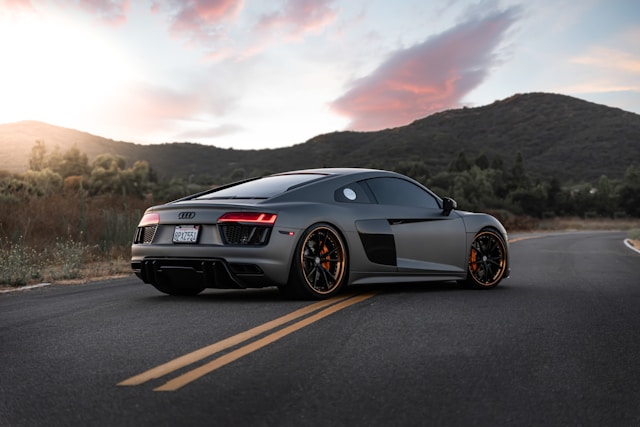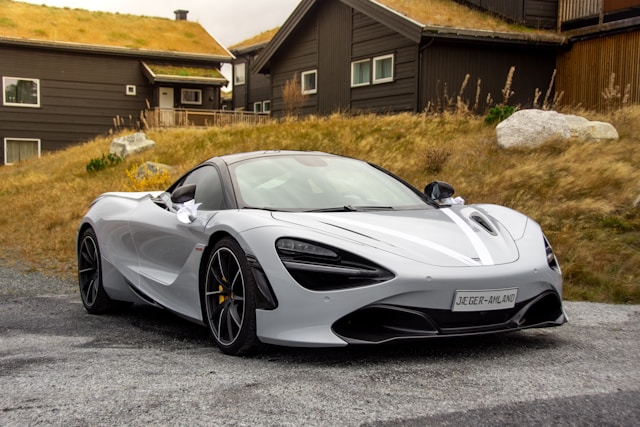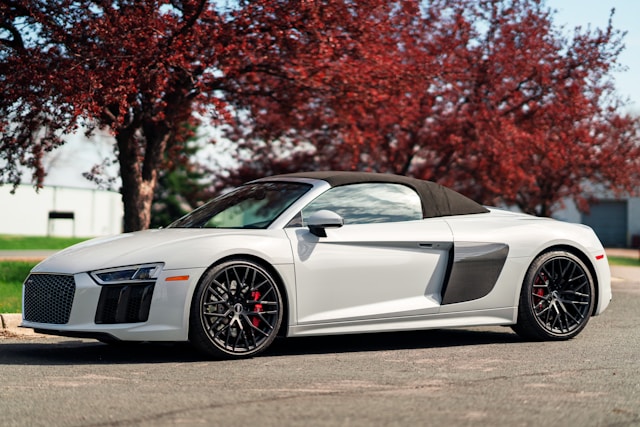Racing Car
 A racing car is any car that has been modified in some way to participate in races or motorsport competitions.
A racing car is any car that has been modified in some way to participate in races or motorsport competitions.
The modifications to which these cars are subjected will vary depending on the type of competition itself, but in any case, they will never be cars that can be used on public roads.
They will typically have to be subject to changes or modifications to be used as regular cars. Still, racing cars can be found on the second-hand market.
To clarify, motorsport refers to any competition with cars, usually racing, although not always.
Types of racing cars
There are as many types of racing cars as there are races, practically, since each race has requirements for its vehicles. Even so, we can make a small classification:
- On the one hand, we have rally competitions and racing or drag racing circuits. Standard or sports cars are used in these modalities, and the modifications concerning the classic models will be very few. Each type of competition will have its rules, including the changes the car must, can or cannot carry.
- On the other hand, we would have competitions like Formula 1, where cars that differ more from the usual passenger cars are used. They are tiny cars built from light materials, such as carbon fibre.
- Cars called sports prototypes are used for other speed competitions, such as the Le Mans Series. They are similar to single-seater vehicles but can seat up to 2 people and have some different parts.
- We can also highlight the silhouettes, which look like street cars but have certain elements, such as the modified engine or chassis; therefore, their off-road use is prohibited. A competition that uses silhouettes is NASCAR, for example.
- The well-known Karts, for their part, are used in karting races.
Known names on the registration list
Twenty-six drivers are confirmed for the season that is about to start this weekend in Marrakech. They include names of old acquaintances from these competitions and big stars such as Yvan Muller, Gabriele Tarquini, Rob Huff, Tom Coronel, and Tiago Monteiro.
Pepe Oriola also returned to the front line of action after his project in the WTCC was cut short due to a lack of financial resources, and he was forced to begin a new journey in the TCR. The Catalan will compete alongside the Campos Racing team with a CUPRA TCR, which he knows well from past seasons.
Without a doubt, we will have to closely monitor the progression of this new championship, where the fights on the track should provide an extra boost compared to other single-seater competitions such as Formula 1 and Formula E.
Supercars V8
This is the most popular championship in Australia, but in addition to its homeland, it also takes place in New Zealand. Currently, 11 teams are represented in the tournament, and only two manufacturers are represented: Ford and Holden. Just five years ago, Nissan, Mercedes, and Volvo were in the game, but without factory support, they, unfortunately, left the game.
Generally, like all touring championships, it is distinguished by the density of results and intense competition. You can also watch it on A21 Network.
There is no game dedicated only to this championship, but you can always try out cars from it in iRacing, Forza Motorsport, GRID, Gran Turismo 6 and many other racing games. Well, you can join the 2002 V8 Challenge.…
Guide: How To Calm Down And Understand Touring Car Racing
 There have always been, are, and will be many championships dedicated to racing cars with closed wheels. Each country has its national championship (in Russia, for example, the RSKG) and dissecting each one would be complete madness, so I will limit myself to only the most essential championships in this guide. And it depends only on your interest how deep we dive into the rabbit hole.
There have always been, are, and will be many championships dedicated to racing cars with closed wheels. Each country has its national championship (in Russia, for example, the RSKG) and dissecting each one would be complete madness, so I will limit myself to only the most essential championships in this guide. And it depends only on your interest how deep we dive into the rabbit hole.
So, the rules are simple. Here, I will analyze the main circuit championships in closed-wheel cars. Therefore, rallying, rally crossing, drifting, and many other equally exciting sports will pass by. Let’s look at their history, racing equipment and features. Also, I will tell you which games you can try out their techniques in or even fully participate in the virtual championship. The championships will be ranked according to the increasing speed of the cars. Let’s begin!
World Touring Car Cup (WTCR)
The championship in its current form was formed relatively recently, only in 2018. For 12 years before this, it was known as the World Touring Car Championship ( WTCC ). It involved Super 2000 and Diesel 2000 class cars. Russian viewers should have remembered it, at least for the participation of the LADA Sport factory team with their Granta and Vesta models.
After the 2017 season, switching to TCR class equipment was decided, and the championship was renamed WTCR.
The championship must feature production cars with a circulation of at least 5,000 copies per year. Engines are limited to 2 litres and 350 horsepower. There are three races in one weekend. Regular qualifying and race on day one. On the second day, there is a three-stage qualification with two races. The first race of the second day takes place with a reverse grid.
Is it worth giving this championship a chance? It has a close fight and many participants, but it is tough to watch in the public domain, which is one of the main drawbacks.
First of all, of course, I would like to recommend the famous simulators from SimBin – Race The Official WTCC Game and Race 07, in which you can participate in the 2006 and 2007 seasons, respectively. No official game is dedicated to the WTCR championship, but TCR class cars often appear in various games. They can be found in abundance in the GRID series.
British Touring Car Championship
 Despite the national status of this championship, it is one of the most critical and influential touring championships. Almost all BTCC champions have become world series champions ( WTCC/WTCR ), NGTC class cars are faster than their counterparts, and the battles are even fiercer.
Despite the national status of this championship, it is one of the most critical and influential touring championships. Almost all BTCC champions have become world series champions ( WTCC/WTCR ), NGTC class cars are faster than their counterparts, and the battles are even fiercer.
You may have often heard about it from Top Gear presenters, learned from Igor Asanov’s video about the Honda Accord STW, which conquered Russian touring or read about it from my article about combat station wagons.
The BTCC competes in NGTC ( Next Generation Touring Car ) class cars, which debuted in 2011 to reduce increased costs. The suspension and brakes are unified, and the 2-litre turbo engine can be built or purchased ready-made from TOCA-BTCC. Such a car without an engine costs about 200 thousand pounds sterling. Time will tell whether this class has a future, but there are already factory teams from BMW, Toyota and Honda in the BTCC. In addition, British touring was the first to use super touring cars, capturing the whole world for 12 years.
As well as being very close and dirty, the BTCC is famous for its narrow UK circuits, where cars sometimes spend more time on two wheels than on four. A strong line-up of pilots, a garage spirit and interesting touring equipment. What else is needed?
You already understand that this championship is worth watching, but how to do it? You can subscribe to the paid channel Motorsport-TV, which broadcasts races, or turn your attention to A21 Network informs with Russian commentary.
Last summer, BTCC management announced that a game based on the championship would be released in 2022. The developers (Motorsport Games) promise to make an exciting race for everyone, add historical cars and much more. You can also try playing the already classic TOCA Touring Car Championship, TOCA 2 Touring Cars.…
What Types Of Races Are There?
 There are many types of racing; regulations are constantly changing to meet new safety requirements and the needs of spectators, sponsors and the pilots themselves. New types of racing are born, such as drag racing, and subsequently, they are separated into separate disciplines. But we can name the main seven areas:
There are many types of racing; regulations are constantly changing to meet new safety requirements and the needs of spectators, sponsors and the pilots themselves. New types of racing are born, such as drag racing, and subsequently, they are separated into separate disciplines. But we can name the main seven areas:
Circuit racing
Everything is simple here. These are the same classic races that everyone has watched at least once in their life on TV. The rules are simple: there is a circular racing track with a carefully prepared asphalt surface, many turns and stands for spectators.
Pilots can participate individually or as part of teams. Whoever covered the distance before others and remained intact is the winner, who is doused with champagne and receives a prize and national love.
Circuit racing is usually the most spectacular; large races attract hundreds of thousands of fans, and for motorsports’ benefit, there are vast industry manufacturers of cars, clothing, and equipment for pilots and car simulators. During races, the count is in fractions of a second, for which the best pilots and engineers in the world.
Fight, everything is large-scale and aesthetically pleasing. Different races involve a different number of laps, but they can be called short: only one race lasts up to 2 hours.
Endurance racing
The name of the race speaks for itself: in addition to speed, pilots have to demonstrate perseverance and teamwork. During pit stops, drivers take turns, allowing each other to recover and return behind the wheel. You can actually hire super cars to do this!
Depending on the rules, the crew can have 3 to 8 people, each of whom spends several hours behind the car’s wheel. There is no time to sleep; sometimes, there is also time to eat; this is an actual race to exhaustion! As in classic circuit racing, races are held on an asphalt track, but here, they are much longer and can last up to 24 hours.
 Rallies and rally raids
Rallies and rally raids
You also cannot help but know about the famous Dakar rally, which has been used as “Paris-Dakar”. This is where the best racing is for those open to more than the monotonous track!
Rally races are often held within the city, and the streets are blocked off for them, but, as they say, not with asphalt alone: the surface can be much more enjoyable. Outside the city, there may be sand and gravel; in the cold season, there is snow and ice; pilots must train on different surfaces to be prepared for anything.
Usually, the route is divided into sections: relatively calm stretches are followed by special sections that take energy, time and, often, fragments of cars. The length of the routes for rally-raid races amounts to thousands of kilometres, and the team independently draws up a schedule for movement, sleep and rest based on the “legend” – the track to be covered.
Here, we are no longer talking about super-light cars: the wear resistance and cross-country ability are priced. Compared to the almost “sterile” conditions of a classic track, here, a lot depends on the type of road surface, as well as on the ability of the crew, if necessary, to quickly repair the car and hit the road again. It’s an option for the strong-willed; there’s no way to say it.
The classic rally distance varies from 70 to 500 km and occurs over several days. It would help to give it your all from the beginning to the first special section.…
GT World Challenge
 This is the premier GT car championship in the world. It is organized by SRO ( Stephane Ratel Organisation ) and has several divisions worldwide ( Europe, America, Asia, Britain, and, from this year, Australia ). The main branch is Europe, where up to 60 crews are exhibited annually. The championship includes sprint races (one hour each) and endurance races up to 24 hours. Seven manufacturers are fighting for first place in the world standings.
This is the premier GT car championship in the world. It is organized by SRO ( Stephane Ratel Organisation ) and has several divisions worldwide ( Europe, America, Asia, Britain, and, from this year, Australia ). The main branch is Europe, where up to 60 crews are exhibited annually. The championship includes sprint races (one hour each) and endurance races up to 24 hours. Seven manufacturers are fighting for first place in the world standings.
The GT World Challenge features a whole string of classes – from the most popular GT3 and GT4 to the more recently formed GT2 and GT1. The last two classes are open to amateurs only and have nothing in common with the old GT2 and GT1. But even this is not all. In America, they perform on TC cars as close to factory ones ( with TCA/TCX subclasses ).
The balancing of the cars helps them to be very close to each other in terms of efficiency, even though there is a wide variety of vehicles in them, from the large front-engine Bentley Continental GT3 to the small mid-engine Audi R8 LMS GT3. Here, the skill of the pilots comes to the fore ( from 2 to 3 pilots driving one car, depending on the race ), as well as the well-coordinated work of the team.
Where can I watch this? Direct to YouTube. Visit the official GT World Challenge channel and watch live broadcasts of any race; unfortunately, they are only in English.
GT3 and GT4 cars are featured in almost every racing game. It’s easier to list where they are not. But GT World Challenge has an official championship game: Assetto Corsa Competizione. It already contains cars and tracks from 3 seasons (2018-2020), and tracks from the British GT Championship and the Intercontinental Cup have been added. Let’s hope for further development of the game and further addition of other divisions of GT World Challenge, new vehicles and classes.
Trophy
While thousands of people create the best asphalt surfaces for circuit racing, the organizers of trophy races go out of their way to organize pits and windbreaks for participants.
Swamps? Great. Snow and mud? Amazing. Sand and clay? Wonderful. “The worse, the better” is the main route choice principle. It’s only suitable for some, but there are plenty of fans. Along the way, there may be tasks that add points, but even without functions, there is something to do here:
- Pull a car out of a swamp.

- Clear the road from beaver lodges.
- Dig out a comrade who got stuck waist-deep while saving everyone.
By the way, crews often help each other get out: sport is a sport, and you shouldn’t even abandon your opponent in trouble. When going on a race, teams fully equip their cars: in addition to food and gasoline, they must take shovels, saws, wheel chains, winches, cables, and a lot of zen with them because anything can happen along the way.
Drag racing
It’s an extraordinary race: everyone drives along a straight section. Something is interesting: there are no turns. Here, only speed has a price, and nothing more: pilots accelerate to 350-400 km/h and experience more significant overloads than astronauts during launch.
Drag racing competitions can be held on almost any vehicle: races for motorcycles, electric cars, scooters, bicycles, and even tractors and lawnmowers. However, for professional racing, unique ultra-light cars called dragsters are built.
Only two cars compete in one race, and classic distances are ¼ mile, ⅛ mile, ½ mile or 1 mile. In Russia, drag racing is relatively young; it did not immediately become an independent sport. At first, motorists drove at night on empty roads, which, of course, considering the speeds developed, was unsafe, but in 2005, we had our first tracks, and now races are held on them, too.
…



